It looks like you're using an Ad Blocker.
Please white-list or disable AboveTopSecret.com in your ad-blocking tool.
Thank you.
Some features of ATS will be disabled while you continue to use an ad-blocker.
9
share:
While doing a little research on another ancient site, I came across the Megalithic House of Taga on the island of Tinian in the Mariana Islands.
These are some amazing ruins, and worthy of some recognition on ATS.
en.wikipedia.org...
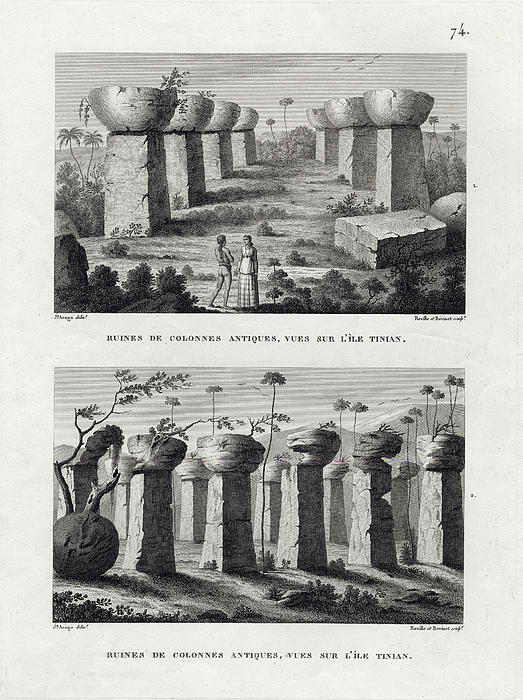
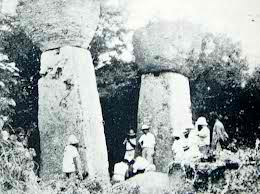
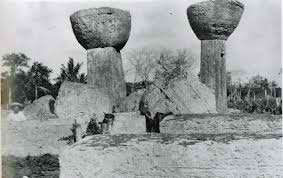
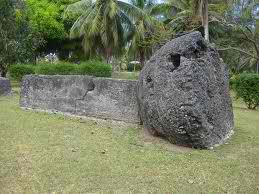
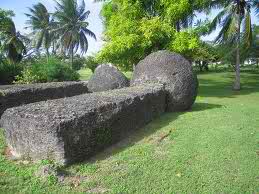

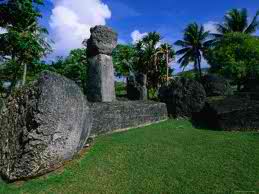
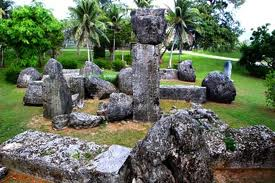
chl.anu.edu.au...
en.wikipedia.org...
An interesting aspect about Chief Taga......He was suppose to be 10 feet tall......Another link to the "giants" of our ancient past?
en.wikipedia.org...
Below is a video of the Rota Latte Stone Quarry or As Nieves Quarry on nearby Rota Island
en.wikipedia.org...
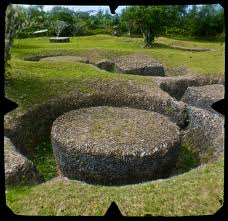
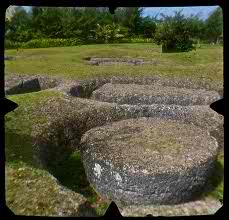
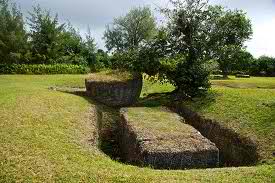
Our world is covered in ancient ruins. The House of Taga is only one more to add to the list of fascinating places of our past that I would love to someday view with my own eyes. Perhaps one day a clearer view of where we have been, and what we have done as humans will come to light due to the understanding of places such as this.
en.wikipedia.org...
House of Taga is located near San Jose Village, on the island of Tinian, United States Commonwealth of the Northern Mariana Islands, in the Marianas Archipelago. The site is the location of a series of prehistoric latte stone pillars which were quarried about 4,000 feet (1,200 m) south of it. Only one pillar is left standing erect. The name is derived from a mythological chief named Taga, who is said to have erected the pillars as a foundation for his own house. Legend says Chief Taga was murdered by his daughter, and her spirit is imprisoned in the lone standing megalith at the site.
The prehistoric latte stone pillars (also called taga stones) at House of Taga stood 15 feet (4.6 m) high, and were quarried about 4,000 feet (1,200 m) south of the site.[2] The original megaliths consisted of a base (haligi) and a hemispherical cap (tasa).[3] When uprighted in spaced parallel rows, it is believed a house was built on top. Of the twelve upright stones sketched by British explorer George Anson during his 1742 visit to Tinian, only one remains standing.[4] The As Nieves Rota Latte Stone Quarry is believed to be the Marianas origin of the period of these megalith structures








chl.anu.edu.au...
en.wikipedia.org...
An interesting aspect about Chief Taga......He was suppose to be 10 feet tall......Another link to the "giants" of our ancient past?
en.wikipedia.org...
In his 1957 published work Marianas Prehistory: Survey and Excavations on Saipin, Tinian and Rota,[6] anthropologist Alexander Spoehr noted that the House of Taga had most likely been the central latte structure among eighteen such structures on Tinian. According to legend collected by Spoehr, a 10 feet (3.0 m) tall Guam chief named Taga married a Rota woman. The chief began the Rota Latte Stone Quarry to carve stone for their home. Mid-way through, he changed his mind and instead built the house on Tinian
A variation on that story also puts Taga's origins at Guam. As a child, he began demonstrating such super-human strength that his own father was jealous and tried to kill him. Taga escaped from his father by jumping off a cliff on Guam and landing on Rota, almost 50 miles (80 km) away. On Rota, Taga grew to adulthood and became a braggart about his prowess. According to the legend, it was Taga who began the As Nieves Quarry on Rota and abandoned it for reasons that are unclear.[8]
Taga married and had a family, and they sailed to Tinian. His reputation had preceded him, and the chief of Tinian presented several challenges to test Taga's strength. The chief was subsequently so impressed with Taga's abilities that he named Taga the chief of the island. Taga carved the latte stones to single-handedly build his Tinian house and a village for his people. He carried the multi-ton pillars all by himself. As the years passed, while on a trip to Saipan, Taga's wife gave birth to a son that Taga bragged about to no end. Taga's brother tired of all the bragging and challenged Taga to a contest, which ended in a draw between the two brothers. This was the end of Taga's bragging.[8]
Eventually, Taga and his wife were the parents of twelve children. When Taga realized that his youngest son had greater strength than he, Taga flew into a jealous rage and murdered his son. Taga's wife died of grief. His youngest daughter then speared Taga to death and died of a broken heart. As each of Taga's twelve children died, their spirits inhabited the latte stones of his house. Each spirit was released by the individual latte stone falling to the ground. The lone standing megalith today is said to imprison the spirit of the daughter who murdered Taga
Below is a video of the Rota Latte Stone Quarry or As Nieves Quarry on nearby Rota Island
en.wikipedia.org...
Rota Latte Stone Quarry is known as the As Nieves quarry and is located near the Chamorro village of Sinapalo, on the island of Rota, United States Commonwealth of the Northern Mariana Islands, in the Marianas Archipelago. As Nieves was the origin the stone quarries in the Marianas. The prehistoric megaliths are believed to have been used as foundation pillars for houses, but their exact age and origins have not been determined. Some pillars weighed up to 35 tons with the methods of quarry and transportation not known.



Our world is covered in ancient ruins. The House of Taga is only one more to add to the list of fascinating places of our past that I would love to someday view with my own eyes. Perhaps one day a clearer view of where we have been, and what we have done as humans will come to light due to the understanding of places such as this.
Thanks for the sight of that old site
It was excavated in the 1960s but the JSTOR is wonky at the moment
The cite is: Marianas archaeology: report on an excavation on Tinian, M Pellett, A Spoehr - The Journal of the Polynesian Society, 1961 - JSTOR
More information on the people and culture of Tinian
Link to a study on soil mounds at Tinian and elsewhere in the Marianas
It was excavated in the 1960s but the JSTOR is wonky at the moment
The cite is: Marianas archaeology: report on an excavation on Tinian, M Pellett, A Spoehr - The Journal of the Polynesian Society, 1961 - JSTOR
More information on the people and culture of Tinian
Link to a study on soil mounds at Tinian and elsewhere in the Marianas
edit on 17/9/12 by Hanslune because: (no reason given)
reply to post by Hanslune
Thanks for the links....There's some very interesting reading to be found there.
Thanks for the links....There's some very interesting reading to be found there.
reply to post by isyeye
What an impressive place and yet I have never heard of it! Thanks for the thread! The number 12 seems to be always coming up. This guy sounds like another Hercules. The quarry is interesting, they have even made the circles for cutting the stones perfect! What a hard job that had to be.
It does remind me of this
The first known painting of Easter Island in 1775 by William Hodges

What an impressive place and yet I have never heard of it! Thanks for the thread! The number 12 seems to be always coming up. This guy sounds like another Hercules. The quarry is interesting, they have even made the circles for cutting the stones perfect! What a hard job that had to be.
It does remind me of this
The first known painting of Easter Island in 1775 by William Hodges

edit on 17-9-2012 by Char-Lee because: (no reason given)
reply to post by isyeye
thanks for the great post, I was really surprised by this island. I doubt I would had ever stumbled upon these great standing stones if you
hadn't of shared.I had a look with google earth and took these photos. I checked on ATS and couldn't see anything about them, but on the net I found
another site 3 years back that were joking about them.I am not sure what these shapes are done with, but they certainly look unnatural. Anybody got
and idea what they might be?

One thing I noticed is that they are formed either side of the ridge that carries the islands.In some cases it is in perfect alignment either side of the islands.

look forward to hearing from someone who can explain these better.

One thing I noticed is that they are formed either side of the ridge that carries the islands.In some cases it is in perfect alignment either side of the islands.

look forward to hearing from someone who can explain these better.
edit on 18-9-2012 by ancientthunder because: missing word
new topics
-
OK this is sad but very strange stuff
Paranormal Studies: 50 minutes ago -
Islam And A Book Of Lies
Religion, Faith, And Theology: 2 hours ago -
Sorry to disappoint you but...
US Political Madness: 4 hours ago -
Watch as a 12 million years old Crab Emerges from a Rock
Ancient & Lost Civilizations: 9 hours ago
top topics
-
Sorry to disappoint you but...
US Political Madness: 4 hours ago, 13 flags -
Just Sick of It! Done! Can't take it anymore!
General Chit Chat: 16 hours ago, 9 flags -
ILLUMINATION: Dimensions / Degrees – Da Vincis Last Supper And The Philosophers Stone
Secret Societies: 15 hours ago, 9 flags -
Watch as a 12 million years old Crab Emerges from a Rock
Ancient & Lost Civilizations: 9 hours ago, 9 flags -
OK this is sad but very strange stuff
Paranormal Studies: 50 minutes ago, 3 flags -
Islam And A Book Of Lies
Religion, Faith, And Theology: 2 hours ago, 1 flags
9
